The Schlüsselkasten (key box) was a small and simple encryption machine developed by the Germans in World War II. According to an NSA report, it could have changed the course of the war if it had been introduced a little earlier.
As is well-known, in World War II the British broke hundreds of thousands of German radio messages encrypted with the famous cipher machine Enigma. It is clear that this tremendous codebreaking success had a major impact on the course of the war. WW2 might have lasted several years longer if the Germans had replaced the Enigma with a stronger design.
Enigma replacements
The Germans were not completely clueless about the weaknesses of the Enigma. However, they believed that the effort necessary to decipher Enigma messages was too large to be realistic. How could they know that the British would recruit thousands of people, including the leading mathematicians of the country, and build over 200 codebreaking machines to break Enigma traffic?
Plans to replace the Enigma with a more advanced cipher machine had been in existence even before the war. Fritz Menzer, one of the most prolific German cryptologists of the time, developed a machine named Schlüsselgerät 39, which was an improved version of the Enigma. In 1939 a prototype of this device was built.
However, the Germans abandoned the Schlüsselgerät 39 in favor of the Schlüsselgerät 41, another design of Fritz Menzer. The Schlüsselgerät 41 was heavily influenced by the cipher machines of Swedish engineer Boris Hagelin, whose products were widely used by the US and the French military.
The functioning of the Schlüsselgerät 41 was completely different from the one of the Enigma. There’s no doubt that the Schlüsselgerät 41 was a major improvement. It was virtually unbreakable with the technology of the time, and I don’t know if the Schlüsselgerät 41 could at all be broken with today’s means. Maybe a reader can answer this question.
A few hundred copies of the Schlüsselgerät 41 were produced and put into service in the last phase of World War II. However, this came too late. If the Germans had introduced the Schlüsselgerät 41 a few years earlier, the British would have lost their advantage of being able to read their enemy’s radio traffic. This would have changed the course of the war and prolonged it.
The Schlüsselkasten
Besides the Schlüsselgerät 39 and the Schlüsselgerät 41, a third Enigma successor (also developed by Fritz Menzer) is known to have existed: the Schlüsselkasten (key box). The only source for this device is a report about German cipher devices in World War II published by the NSA. This report contains two pictures of a wooden Schlüsselkasten prototype (the final device was to be made of aluminium). I am not aware of any other pictures of this machine. No copies of the Schlüsselkasten are known to have survived.
According to the NSA report, “the Germans intended to have 1,000 available by October 1945 and to mass-produce 10,000 per month by January 1946. It would have replaced the ENIGMA below the level of division.” If this is correct, the Schlüsselkasten was meant to complement the Schlüsselgerät 41 for medium security radio traffic. Contrary to the Enigma and the Schlüsselgerät devices, the Schlüsselkasten didn’t have a keyboard. This made the machine more robust, while operating it was less convenient.
The most amazing statement in the NSA report is the following: “If it [the Schlüsselkasten] had been introduced in 1942, it could have changed the course of the war.” As it seems, the NSA aouthor (a late historian named David Mowry) considered the Schlüsselkasten secure enough to withstand the codebreaking efforts of the British. This is note-worthy, as the design of the Schlüsselkasten is significantly simpler than that of the Enigma.
How did the Schlüsselkasten work?
I wish I could explain in detail how the Schlüsselkasten worked, but the description in the NSA report is hard to understand. The ciphering was done with two fixed strips (GEH… and FRI…) and a movable two row strip in between:
The inscriptions of the strips could be changed. 13 characters of the alphabet were written on the fixed base, and the other 13 on the top and bottom of the sliding strip. Here, the letters on the fixed parts are arranged with the passwords GEHEIMSCHREIBER and FRITZMENZER. The sliding strip was driven by a spring controled by four notched wheels.
If I’m not wrong, the G1, G2, G3 and G4 strips only indidcate if a particular notch of the notched wheel is activated. In the final design of the machine these strips did not exist. Here’s the description of the functioning from the NSA report:
In use, the slide was pulled to the right until it stopped, winding the spring that drove the mechanism. Pressing a button released the slide to move left. When at either or both of the reading positions A1 or A2, the pins on all four pin wheels were all inactive, the slide stopped, and encipherment took place. If the step came from A1 alone or A1 and A2 together, the slide took an additional step. Whenthe slide stopped, either the top or the bottom alphabet would be in phase, and the cipher value could be read off. Pressing the button again would allow the slide to slide left to its next stop.
I certainly have understood the concept of this machine, but I still don’t get the details. If a reader knows a better description or knows another source for the Schlüsselkasten, I would be interested to know.
Follow @KlausSchmeh
Linkedin: https://www.linkedin.com/groups/13501820
Facebook: https://www.facebook.com/groups/763282653806483/
Further reading: German cipher machines in World War 2: A complete (?) list

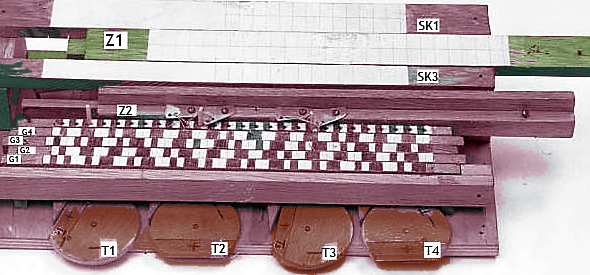
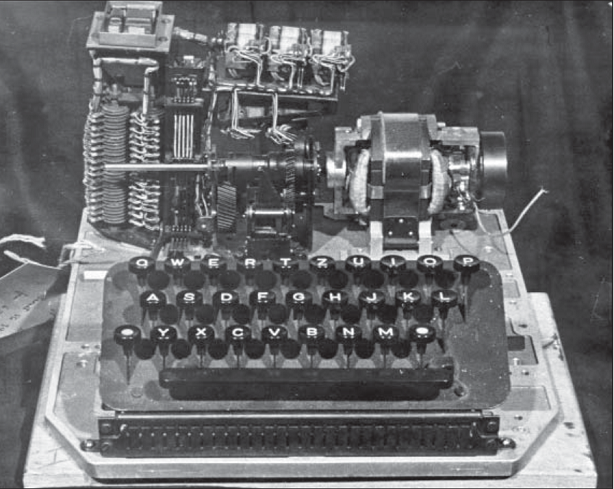
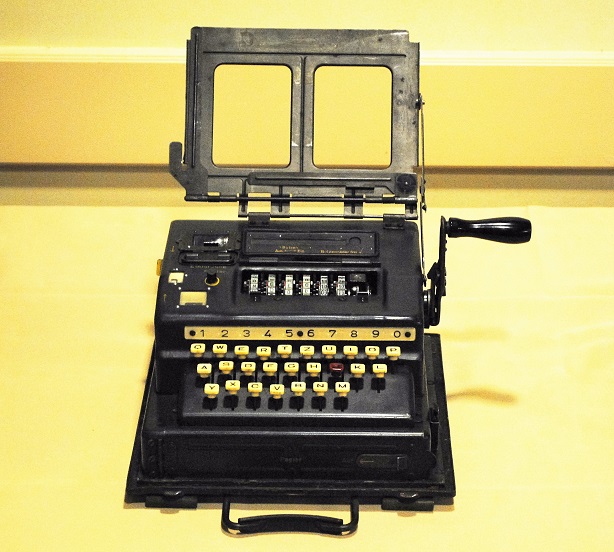
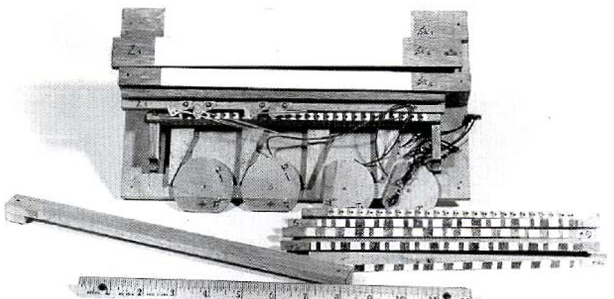

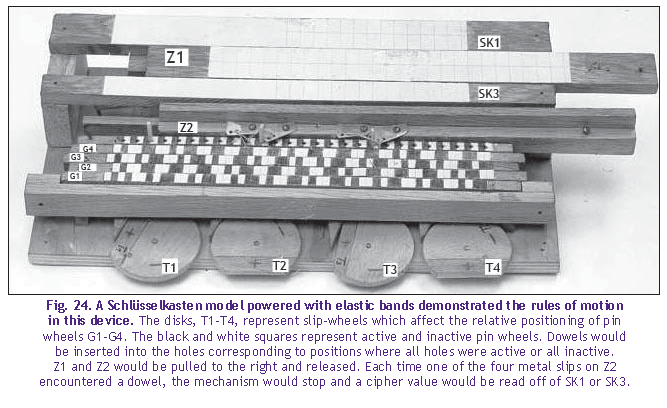

Kommentare (2)